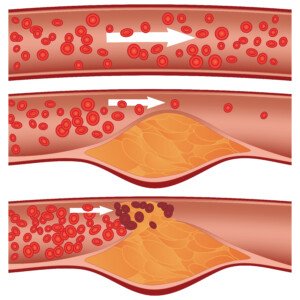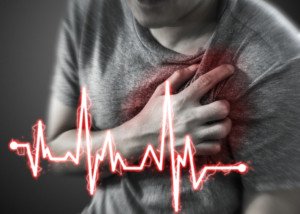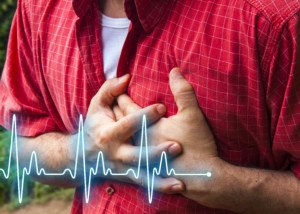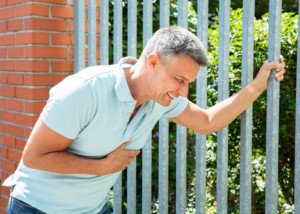
Just who should worry about soft plaque rupture every time they work out?
“We define plaque in two ways,” begins Pilar Stevens-Cohen, MD, FACC, Department of Cardiology, South Nassau Communities Hospital.
“Soft/unstable vs. stable/calcified plaque. Soft plaque is considered more unstable and is the plaque thought to rupture to cause myocardial infarctions [heart attacks], whereas stable plaque is more likely to cause predictable angina with exertion.”
Dr. Stevens-Cohen continues, “Soft plaque may rupture at any time. Normally, it doesn’t cause symptoms,” in that, despite the rupture, blood flow is not inhibited.
“We don’t know what causes soft plaque to suddenly rupture and trigger the sequence of events culminating in MI [heart attack].
Can exercise increase the odds of soft plaque rupturing?

Shutterstock/Liderina
“A sudden increase in demand of the heart, i.e., by increasing heart rate (strenuous exercise or any exercise in a patient not used to exercising) can change the workload of the heart and precipitate symptoms.”
If as an absolute rule, intense exercise (or any level exercise) increased the risk of soft plaque rupture, then people in gyms, on tennis courts, hiking trails, etc., would be dropping left and right from heart attacks.
But then again, bear in mind that people who regularly engage in gym workouts, tennis and basketball games, jogging, etc., in general have far better heart fitness and health than do sedentary people.
The problem is when a sedentary person, whose heart is NOT used to a hard workout, one day engages in a hard workout (shoveling snow, chopping wood, helping a friend move, hiking for the first time in years, etc.).
THIS is the person who’s at risk of suffering a soft plaque rupture that can result in a heart attack.
“Yes, most sudden MIs or what we call massive heart attacks that change the ECG (the true medical emergency where we want the vessel open in < 90 minutes), occur in the rupture of soft plaque,” says Dr. Stevens-Cohen.
“With the increase in demand caused by sudden exercise/excitement, a not so stable plaque may rupture, exposing the inside of the plaque to the bloodstream and causing a thrombus to form.”
So if your body is already well-acquainted with intense exercise, you don’t need to worry about a soft plaque rupture as you perform your deadlifts, chin-ups to exhaustion, squat jumps or high intensity interval training.

Shutterstock/Anatoliy Karlyuk
It’s your paunchy, sedentary neighbor who’s out there hurriedly shoveling snow who’s at risk of that soft plaque rupture.
Though the cold air adds a burden to the heart, this individual is at risk of a soft plaque rupture even in warm weather should he decide one day to engage in strenuous exercise (i.e., a pickup basketball game with the neighborhood teenagers).
The degree of stable/calcified plaque that’s present in the coronary arteries is strongly correlated to the amount of soft plaque present, and is strongly correlated to likelihood of a cardiac event within three years of such a finding.
In other words, if a person at low risk for heart disease has a calcium score of zero, chances are pretty high that this person has very little, if any, soft plaque buildup.
The higher the calcium score, the greater the chances of having soft plaque buildup.
Exercise is great for the heart and helps prevent soft plaque buildup.
The problem is when a sedentary person, especially one with risk factors for heart disease and attack (e.g., high blood pressure, diabetes, abdominal obesity, overall excess body fat, smoking, standard American diet), takes on way too much exercise at once.

Dr. Stevens-Cohen is board certified in cardiology, nuclear cardiology, echocardiography and internal medicine.
 Lorra Garrick has been covering medical, fitness and cybersecurity topics for many years, having written thousands of articles for print magazines and websites, including as a ghostwriter. She’s also a former ACE-certified personal trainer.
Lorra Garrick has been covering medical, fitness and cybersecurity topics for many years, having written thousands of articles for print magazines and websites, including as a ghostwriter. She’s also a former ACE-certified personal trainer.
.


























